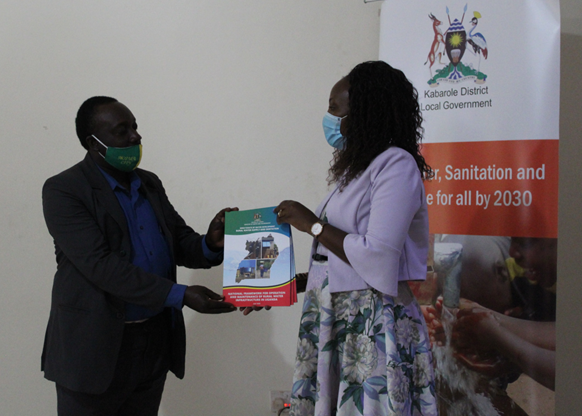
IRC has supported Kabarole District local government to establish a District Water Supply Services Board (DWSSB).
Published on: 01/08/2023
A month-long process started with the formation and in some parts revitalisation of the sixteen (16) Sub-county Water Supply Services Boards (SWSSB) following the 2020 National Framework for Operation and Maintenance of Rural Water Systems in Uganda.
The District Water Office of Kabarole District, supported by IRC’s Regional WASH Officer and staff from the Ministry of Water and Environment – Regional centre 5, organised meetings for water source committees in each sub-county. In these meetings, the O&M framework was disseminated, and the main objective of electing community members for the Sub-county Water Supply Services Boards was done. A District Assembly with representatives from all the SWSSBs resulted in the selection of members for the DWSSB. This process concluded with the District Council meeting on June 30 where the DWSSB names were approved.
The Water Supply Services Boards are a professional management structure through which the district will ensure smooth operation and maintenance of water supply systems. With the aid of the District Water Supply Services Board, the district procures Area Service Provider(s) to undertake the management of a cluster of water supply water facilities in designated geographical areas not gazetted for management by any other utility agency, such as the National Water and Sewerage Cooperation or Umbrella Water Authority.
The names of the DWSSB will be submitted to the Directorate of Water Development/ Ministry of Water and Environment for approval as Kabarole District Water Supply Services Board (DWSSB). This will provide ground for gazetting Kabarole District as a water authority with full mandate for managing its water service provision.
Kabarole District will be the first local government in Uganda to implement the Community Based Management System Plus (CBMS+); a service delivery model that provides community involvement together with professional management of water services.
The tasks of Kabarole DWSSB will be plentiful. There are four schemes under community management, and over 12,000 point water sources such as deep boreholes, hand dug wells and protected springs that will be under the management of the DWSSB.
So far, it has not been smooth sailing. There are no experiences to draw from and some sections of the guidelines are not clear. The biggest question is how to fund the DWSSB. There is also some apprehension on how the DWSSB will overcome operational challenges that held back the old CMBS model, such as collection and management of user fees, vandalism of point water sources among others.
IRC is committed to supporting Kabarole DWSSB through capacity building. The starting point is the orientation of the members on their roles and responsibilities based on the O&M framework and the WSSB guidelines. To ensure that the DWSSB is functioning, it will be important to develop a strategic plan, carry out asset analysis and obtain resources for continuous monitoring of the functioning of the water sources.